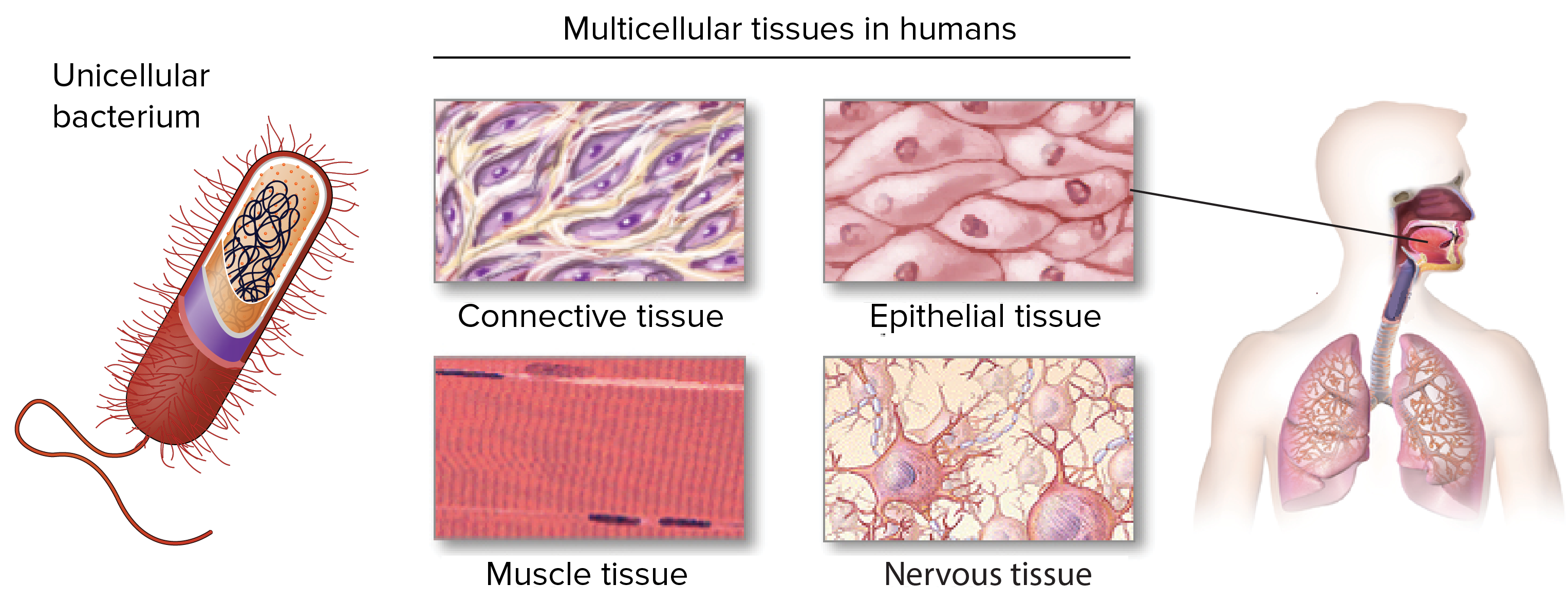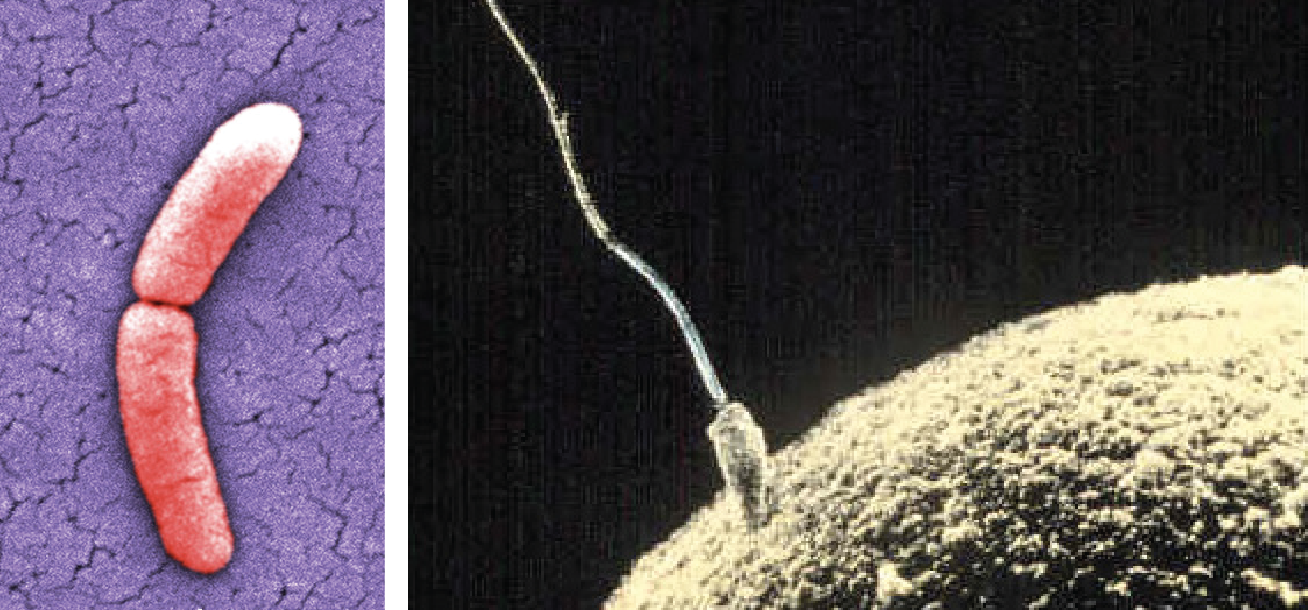9 Definition of Life
Biology is the branch of science concerned with the study of living things, or organisms. That definition is pretty straightforward. However, it opens the door to more difficult—and more interesting—questions: What is life? What does it mean to be alive?
Learning Objectives
- Discuss some examples of living things and how we know they’re alive
- Describe the attributes that living things have that distinguish them from nonliving things
- Discuss some of the various definitions of life, and why scientists argue over whether they are or are not satisfactory
You are alive, and so am I. The dog I can hear barking is alive, and so is the tree outside my window. However, snow falling from the clouds is not alive. The device you’re using to read this article is not alive, and neither is a chair nor a table. The parts of a chair that are made of wood were once alive, but they aren’t any longer. If you were to burn the wood in a fire, the fire would not be alive either.
What is it that defines life? How can we tell that one thing is alive and another is not? Most people have an intuitive understanding of what it means for something to be alive. However, it is surprisingly hard to come up with a precise definition of life. Perhaps because of this difficulty, since ancient times there have been “vitalistic” hypotheses—the idea that there must be some quality that life has which makes it different from non-life. This quality has alternatively been called “elan vital” or “life force” or “divine spark.” In spite of many proposals that this is the key distinguishing feature of life, it has consistently eluded measurement. The proponents of these vitalistic hypotheses have claimed to be able to directly observe the thing that distinguishes life from non-life, and have consistently been shown to be incorrect.
A famous example was the case of Franz Mesmer who in the eighteenth century claimed to be able to capture and use what he termed the “magnetism” of living things to cure diseases. Investigations by scientists at the time showed that his claims were based on wishful thinking; when they secretly switched his potions with decidedly non-living vials of water, Franz Mesmer could not tell the difference.
In the nineteenth century, a school of “vitalist chemistry” proposed that the chemistry of living things would always be separate from non-living things. They predicted that it would be impossible to distill chemical compounds produced by living things through artificial or non-living processes. This idea of vitalist chemistry was shown to be incorrect when urea, an organic compound, was synthesized from two inorganic compounds thereby proving that life was not needed to produce an organic chemical.
Even with the debunking of vitalism, proponents continued to argue that there is something special and ineffable about life that science has not yet discovered. The scientific community has largely moved on from this argument and vitalism has been relegated as pseudoscience in most circles.
The struggle to clearly define life led to many attempts that are operational descriptions of life—such definitions allow us to separate living things from nonliving ones, but they don’t actually pin down what life is. To make this separation, we might try to come up with a list of properties that are, as a group, uniquely characteristic of living organisms. This is the most common solution employed today.
Test Your Intuition
Classify the following as either living or non-living.

How did you decide whether a virus is living or non-living? Note that there is not a generally accepted “yes” or “no” answer to the question of whether a virus is alive.
Properties of life
We can determine properties of life by identifying various traits common to all the living organisms that we know of. Although nonliving things may show some of these characteristic traits, living things consistently show all of them.
Concept Check: What properties do living things all share?
One strategy scientists use to define life is to list the things all life has in common. Make a list of the properties that you think all living things share.
Show Answer
You may have listed reproduction or evolution. These things are very important for ensuring the survival of a species. A living thing must be able to reproduce or its species won’t live on after it dies. A living thing must also be able to evolve to the changing conditions of its environment, or it won’t be able to survive to reproduce.
There are many things that nearly all living things share in common, but there are often exceptions which make defining life difficult. For example, your intuition may have been to label the mule in question one as living; however, mules are sterile, and can neither reproduce nor evolve. A mule is one of those exceptions that makes defining life difficult.
Some non-living things have things in common with life. For example, 3D printers can print all sorts of objects, from models of the human brain to life-sized boats. What if a 3D printer printed a copy of itself? Technically the printer would be reproducing.
1. Organization
Living things are highly organized, meaning they contain specialized, coordinated parts. All living organisms are made up of one or more cells, which are considered the fundamental units of life.
Even unicellular organisms are complex! Inside each cell, molecules are organized into cell organelles and coherent structures. Multicellular organisms—such as humans—are made up of many cells. The cells in multicellular organisms may be specialized to do different jobs. Similar cell types can be organized into tissues, such as connective tissue, epithelial tissue, muscle, and nervous tissue. Tissues, in turn, coordinate to create organs, such as the heart or lungs, which carry out specific functions needed by the organism as a whole.
7. Evolution
Populations of living organisms undergo evolution, meaning that the genetic makeup of a population changes over time. Living organisms must therefore have a system for storing genetic material, such as in DNA and/or RNA, and a pathway through which this genetic material can change.
In some cases, evolution involves natural selection, in which a heritable trait, such as darker fur color or narrower beak shape, lets organisms survive to reproduce better in a particular environment. Over generations, a heritable trait that provides a reproductive advantage may become more and more common in a population, making the population better suited to its environment. This process is called adaptation.
Separating living and non-living things
How well do the properties above allow us to determine whether or not something is alive? Let’s revisit the living and nonliving things we saw in the introduction as a test.
The living things we listed in the introduction—humans, dogs, and trees—easily fulfill all seven criteria of life. We, along with our canine friends and the plants in our yards, are made of cells, metabolize, maintain homeostasis, grow, and respond. Humans, dogs, and trees are also capable of reproducing, and their populations undergo biological evolution.
Living things may keep some properties of life when they become nonliving, but lose others. For instance, if you looked at the wood in a chair under a microscope, you might see traces of the cells that used to make up the living tree. However, the wood, having been made into a chair, can no longer grow, metabolize, maintain homeostasis, respond, or reproduce. A wooden chair is therefore not alive.
Nonliving things may exhibit some of the criteria for life. For instance, crystals of snow are organized—though they don’t have cells—and can grow, but they don’t meet the other criteria of life. Similarly, a fire can grow, reproduce by creating new fires, respond to stimuli, and can arguably even be said to carry out chemical reactions that constitute a metabolism. However, fire is not organized, does not maintain homeostasis, and lacks the genetic information required for evolution.
Indeed, it seems biochemistry is a key component of living things that allows us to make a clear distinction between living and nonliving things. The four main types of chemicals living things utilize for this are proteins, nucleic acids, carbohydrates, and lipids. We will spend considerable time investigating the details of these chemicals to understand the contexts where they arise and speculate on whether and how they might exist in environments well outside the Earth.
Concept check: Can a robot be considered alive?
Consider the properties listed above and assess whether a robot fulfills each criteria or not.
Show Answer
Let’s test out our list of properties on a trickier case. Imagine a very sophisticated robot, such as R2D2 or C3PO from the Star Wars movies. Such a robot would show organization—without cells—respond to stimuli, and even have a metabolism of sorts, using energy to power the circuitry of its “nervous system”. It might even maintain homeostasis, with an internal fan or heater that turned on if the temperature changed.
A typical robot would not grow, reproduce, or be part of an evolving population, and thus wouldn’t be considered alive. However, what if a robot were programmed to add pieces onto itself? To build more robots? To build more robots with variations in the “DNA” of their programs? As these ideas show, a sophisticated enough computer or robot—far beyond what we have today!—could start to bend the definition of life.
What counts as life is still being defined.
Even with the biochemical definition of life in hand, the question of what it means to be alive remains unresolved. Living organisms have many different properties related to being alive, and it can be hard to distinguish the exact set that best constitutes an operational definition of life. Different thinkers have developed different lists of the pertinent properties of life. For instance, some lists might include movement as a defining characteristic, while others might specify that living things carry their genetic information in the form of DNA. Still others might require that life is carbon-based, meaning the molecules that make up a living organism must incorporate carbon.
The philosophy that living things are made living by a "life force" which eluded measurement.
considered by many biologists to be a key feature of life, a cell contains biological material separated by a membrane
Organisms that consist of one cell.
Organisms that consist of more than one cell.
Groups of specialized cells in multicellular organisms that perform the same function.
Specialized parts of the body which carry out certain necessary functions of life.




